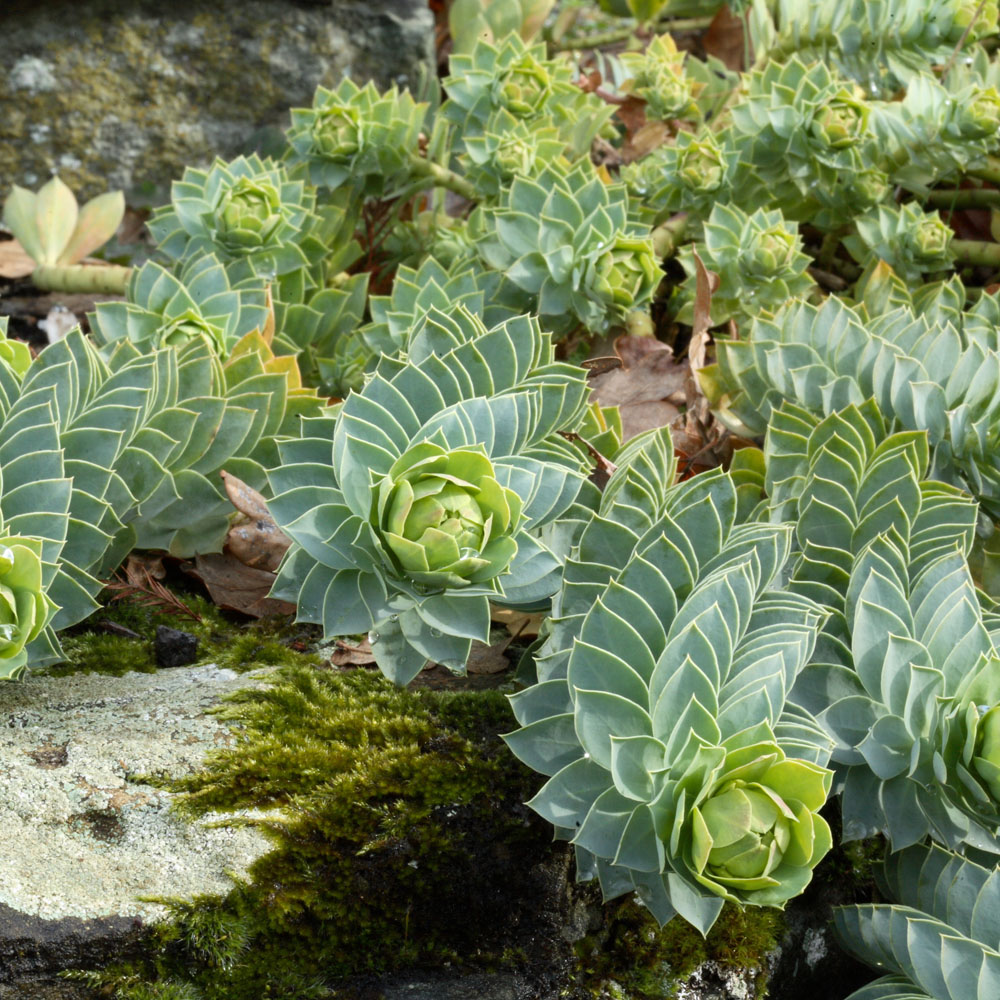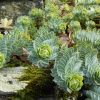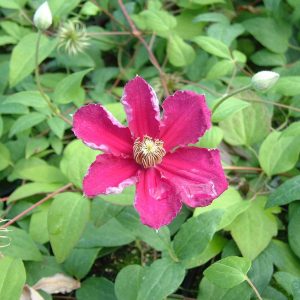Description
Euphorbia myrsinites, commonly known as myrtle spurge, is a low-growing succulent plant that is prized for its beautiful foliage and showy flowers. This plant is native to Europe and western Asia, and is a popular choice for rock gardens, borders, and ground cover in the UK. Euphorbia myrsinites is a low-maintenance plant that is ideal for full sun to partial shade locations in the garden. It prefers well-draining soil and is tolerant of drought and heat. The plant’s blue-green leaves are arranged in a spiral pattern along its stems, and its bright yellow flowers appear in the spring, adding a splash of colour to the garden. In addition to its ornamental value, Euphorbia myrsinites is also valued for its ability to attract bees and other pollinators to the garden. The plant’s flowers provide an important source of food for these important insects. To create a harmonious planting scheme, consider pairing Euphorbia myrsinites with some complementary companion plants. For example, the purple blooms of Aubrieta (rock cress) can provide a beautiful contrast to the yellow flowers of the myrtle spurge. The delicate, pink flowers of Dianthus (carnations) also pair well with Euphorbia myrsinites and their low-growing habit makes them ideal for planting in front of the succulent. Overall, Euphorbia myrsinites is a great choice for adding colour and interest to any UK garden. By pairing it with some well-chosen companion plants, you can create a beautiful and harmonious planting scheme that will be a joy to behold throughout the growing season.
Key Facts
- Common Name(s):Broad-leaved glaucous spurge
- Hardiness:Fully hardy
- How big will I get? Euphorbia myrsinites can grow to a height of 0.1m and a spread of 0.5m.
- Did You Know That:Euphorbia is one of the largest genera of flowering plants with over 2000 members?
Plant Calendar
A rough guide to how this plant will change through the year.
| Jan | Feb | Mar | Apr | May | June | July | Aug | Sept | Oct | Nov | Dec | |
| Flowering Time |  |
 |
||||||||||
| Foliage Colour |   |
  |
  |
  |
  |
 |
 |
 |
  |
  |
  |
  |
| J | F | M | A | M | J | J | A | S | O | N | D |
 |
 |
||||||||||
  |
  |
  |
  |
  |
 |
 |
 |
  |
  |
  |
  |
Care Guide

Soil Requirements
Euphorbia myrsinites prefers soil with good drainage and does not tolerate standing water. This plant can grow in soil with a wide range of pH levels, it is not picky about the pH level of the soil.

Best Position
Euphorbia myrsinites can handle either an exposed or a sheltered position and can cope with either full sun or partial shade.

Maintenance
Euphorbia myrsinites is fairly low maintenance and doesn’t require any pruning.

Pest, Diseases and Wildlife
Euphorbia myrsinites is generally pest free, and it tends not to have problems with diseases. It is toxic to cats, dogs, horses and people.





